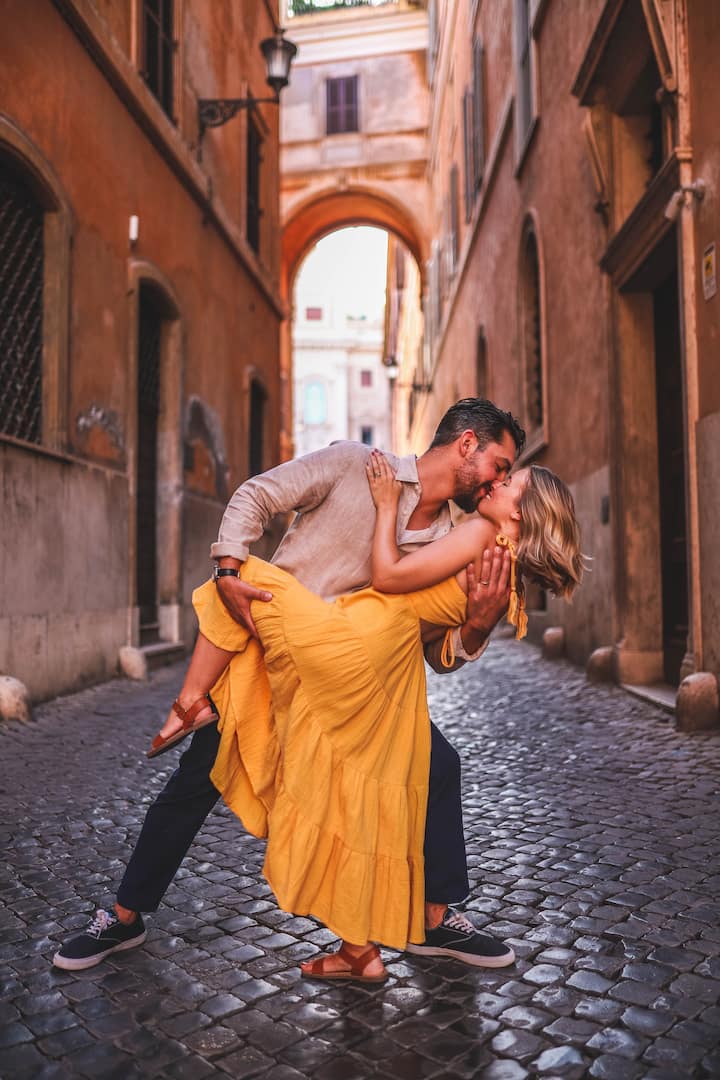Historische Stätte
Palazzo Farnese
Von 56 Einheimischen empfohlen,
Tipps von Einheimischen
One among the most beautiful buildings in Rome! Michelangelo took this project in charge in the year 1546!
Near Campo de’ Fiori, famous Renaissance palace built in part by Michelangelo, now home to the French embassy. Rich in paintings of the Italian Renaissance.
Farnese Palace Set in the middle of a small piazza, Palazzo Farnese is an impressive testament to the great artists of the Renaissance: Antonio da Sangallo, Michelangelo, Vignola, and Giacomo Della Porta. Considered one of the wonders of Rome, its sheer size has earned it the nickname “the die”. It all began when Cardinal Alessandro Farnese (the future Pope Paul III) purchased and then demolished the original buildings on the site to create the piazza and his own magnificent residence. Design of the project was awarded to Antonio da Sangallo the Younger. Work began in 1514, but when the original architect died in 1546, Michelangelo was called in. He designed the first two floors, built the third, and adorned the façade with a central balcony. He also had planned to build a bridge that would span the Tiber and connect the rear of the palazzo to the Villa Chigi – also called the “Farnesina”(the little Farnese) – on the opposite bank. But because of the death of Pope Paul III, the project was never completed, although a vestige remains in the form of a short portion of bridge that passes underneath the Via Giulia behind the palazzo. Vignola and Giacomo della Porta were also involved in the project. Some of the construction materials came from ancient Ostia quarries; the ceiling beams – which had to be very long and sturdy – were brought in from the Carnia woods. Ownership of the Palazzo Farnese changed repeatedly over the years. In the 18th century, the palazzo became the property of the Bourbon Kings of Naples and was re-named “Palazzo Regio Farnese”. For a period in 1860, Francesco II of Naples lived there after losing his kingdom. In 1911 it was purchased by France and then sold to Italy, which in turn rented it back to the French under a 99-year lease for a nominal amount. Since 1874 it has been the headquarters of the French Embassy. The palace has three floors, which find clear expression on the superb, linear façade. The austere brick ornamentation is variously shaded (due to different baking temperatures), this colouring having been revealed during a recent restoration. It is unclear why such dissimilar bricks were used. Was this multicoloured brick layer intended to be visible, or were the different colours ultimately meant to be hidden with plaster? When one considers other Roman palazzos of the same period, the second hypothesis is more credible. A Latin inscription clearly visible on the façade commemorates the pope and cardinal responsible for the palazzo's construction. The interiors include works by important artists: Daniele da Volterra (the famous “Breeches-Maker,” who painted trousers on Michelangelo's nudes in the Sistine Chapel), Taddeo Zuccari, and Annibale Carracci. The palazzo blends seamlessly with the splendid piazza around it. Piazza Farnese unfolds symmetrically to the viewer with the austere and massive facade of the palazzo as a backdrop. There are two fountains, one on each side, made from two large basins originally from the Baths of Caracalla; a lily – the Farnese symbol – has been added to the centre of these. Both basins were originally located in front of the Basilica of San Marco (in the Piazza Venezia), and initially only one was placed in the centre of Piazza Farnese. Completing the piazza is the 18th- century church of Saint Brigida, a Swedish saint who founded a convent on the site in 1300. Facing the Palazzo Farnese is also the 18th- century palazzo of Gallo di Roccagiovine, begun by Baldassarre Peruzzi; its massive structure and large doors conceal a splendid interior courtyard and monumental staircase. For many years the piazza was the central place for Rome's tournaments, bullfights, and festivals. In addition, the spectacular summer flooding events that later made Piazza Navona famous started here.
Farnese Palace Set in the middle of a small piazza, Palazzo Farnese is an impressive testament to the great artists of the Renaissance: Antonio da Sangallo, Michelangelo, Vignola, and Giacomo Della Porta. Considered one of the wonders of Rome, its sheer size has earned it the nickname “the die”. I…
Palazzo Farnese, one of the most beautiful Renaissance palaces of Rome was started in 1514 by Antonio Sangallo, continued by Michelangelo and completed by Giacomo della Porta. PALAZZO FARNESE - The Palace belonged to one of the most famous families of Renaissance Rome and today is home of the French embassy. To make the visit should book early, 1 to 4 months before depending on the season and number of people, the tours are only in French or in Italian. Therefore, are not allowed interpreters for other languages. The tours are free and conducted exclusively by the guide of the Embassy. Reservations can be both individual and for groups of up to 20 people. For the same organization (cultural association, university and / or person) is granted one visit per year. For the tour it is important to have a valid ID (no photocopies). Photographs and films are not allowed and bags and bulky items are not allowed (neither custody nor wardrobe).
Palazzo Farnese, one of the most beautiful Renaissance palaces of Rome was started in 1514 by Antonio Sangallo, continued by Michelangelo and completed by Giacomo della Porta. PALAZZO FARNESE - The Palace belonged to one of the most famous families of Renaissance Rome and today is home of the Frenc…
Einzigartige Aktivitäten in der Umgebung
Das empfehlen Einheimische
Standort
67 Piazza Farnese
Roma, Lazio







